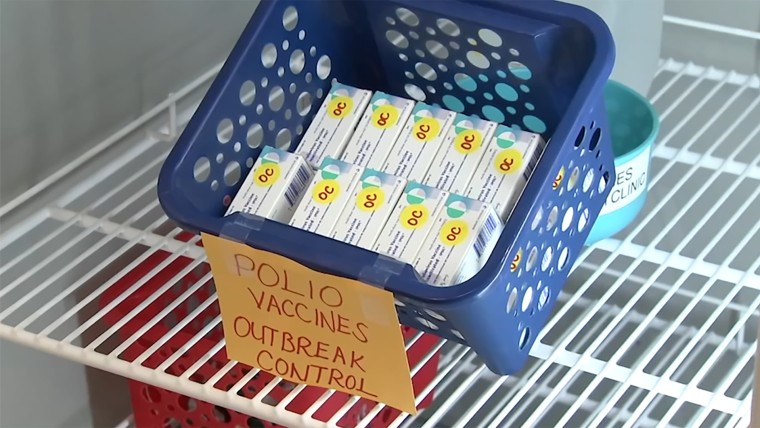The New York State Health Department warned Thursday of the “potential community spread” of polio after a paralysis case was detected in an unvaccinated young adult last month.
Paralysis cases of polio are rare, representing around 1 in 200 infections according to the World Health Organization, so detecting a single case suggests the presence of many more. New York’s health department also detected polio in wastewater samples from two different counties, Orange and Rockland, in both June and July — another sign of community transmission.
“Based on earlier polio outbreaks, New Yorkers should know that for every one case of paralytic polio observed, there may be hundreds of other people infected,” New York State Health Commissioner Dr. Mary Bassett said Thursday in a statement.
“Coupled with the latest wastewater findings, the Department is treating the single case of polio as just the tip of the iceberg of much greater potential spread,” she added.
The health department recommends that any New Yorkers who haven’t received polio vaccines, including infants and pregnant people, get vaccinated right away.
Here’s how polio spreads and how well vaccines protect against the disease.
What is polio?
Polio is a highly infectious disease caused by the poliovirus. The disease was eradicated in the U.S. in 1979, and the country hasn’t seen a case of domestically acquired wild polio since. The recent New York patient was infected with vaccine-derived polio, a strain linked to live virus from an oral polio vaccine not administered in the U.S. It marks the first U.S. of vaccine-derived polio since 2013.
“[For] public health people everywhere, like myself, this just makes us want to cry,” said Lynelle Phillips, an assistant teaching professor at the University of Missouri School of Health Professions and board president of the Missouri Immunization Coalition.
“Hopefully this is just an aberrant situation and we can get it under control,” she said. “But my heart breaks for that person that has flaccid paralysis from a totally preventable disease.”
Around 72% of people infected with polio have no visible symptoms, according to the Centers for Disease Control and Prevention. Another 25% may develop flulike symptoms such as sore throat, fatigue, fever, nausea, headache or stomach pain, which tend to resolve after a few days.
In rare cases, the virus can invade the nervous system and cause meningitis (swelling of the brain and spinal cord membranes), paresthesia (the…
Click Here to Read the Full Original Article at NBC News Top Stories…

